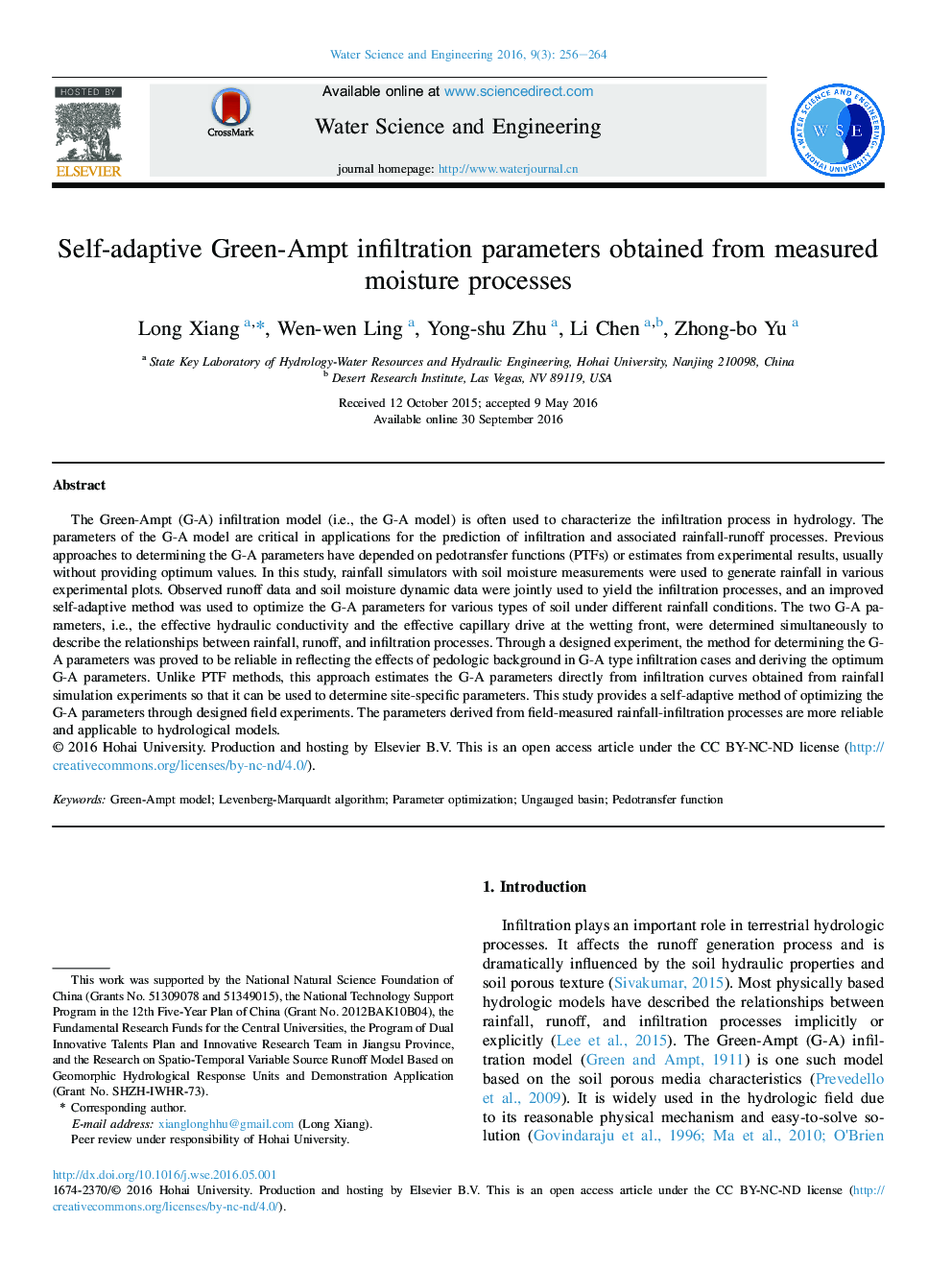| Article ID | Journal | Published Year | Pages | File Type |
|---|---|---|---|---|
| 4929505 | Water Science and Engineering | 2016 | 9 Pages |
The Green-Ampt (G-A) infiltration model (i.e., the G-A model) is often used to characterize the infiltration process in hydrology. The parameters of the G-A model are critical in applications for the prediction of infiltration and associated rainfall-runoff processes. Previous approaches to determining the G-A parameters have depended on pedotransfer functions (PTFs) or estimates from experimental results, usually without providing optimum values. In this study, rainfall simulators with soil moisture measurements were used to generate rainfall in various experimental plots. Observed runoff data and soil moisture dynamic data were jointly used to yield the infiltration processes, and an improved self-adaptive method was used to optimize the G-A parameters for various types of soil under different rainfall conditions. The two G-A parameters, i.e., the effective hydraulic conductivity and the effective capillary drive at the wetting front, were determined simultaneously to describe the relationships between rainfall, runoff, and infiltration processes. Through a designed experiment, the method for determining the G-A parameters was proved to be reliable in reflecting the effects of pedologic background in G-A type infiltration cases and deriving the optimum G-A parameters. Unlike PTF methods, this approach estimates the G-A parameters directly from infiltration curves obtained from rainfall simulation experiments so that it can be used to determine site-specific parameters. This study provides a self-adaptive method of optimizing the G-A parameters through designed field experiments. The parameters derived from field-measured rainfall-infiltration processes are more reliable and applicable to hydrological models.
